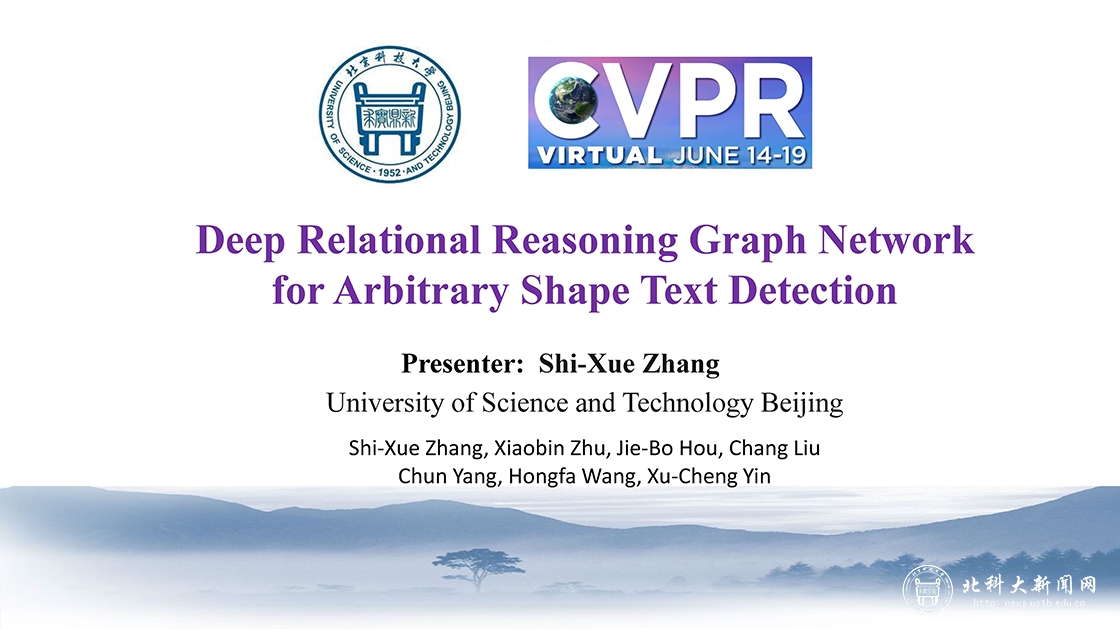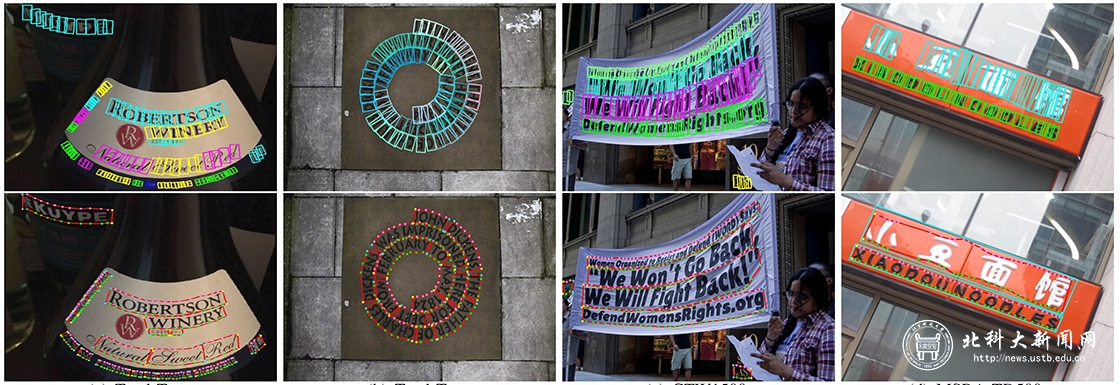Prof. YIN’s Team Makes Recent Progress in Image Text Detection and Recognition
Release Time: 2020-08-16Views:
Recently, Prof. YIN Xu-Cheng’s team from the School of Computer and Communication Engineering, USTB, proposed new methods for text detection and recognition in images and videos. To deal with the challenges of arbitrary shape text detection, they utilized novel deep neural networks and designed new multi-orientation text detection methods. Their methods showed outstanding performance (f-score = 88.72%) for the recognition of curved text dataset, i.e., Total-Text. At a top conference for computer vision and pattern recognition (IEEE Conference on Computer Vision and Pattern Recognition, CVPR 2020), a paper from Prof. YIN’s lab (“Deep Relational Reasoning Graph Network for Arbitrary Shape Text Detection”) was accepted and published; at a top journal for image processing and pattern recognition (IEEE Transactions on Image Processing, IEEE T-IP), another paper (HAM: Hidden Anchor Mechanism for Scene Text Detection) was published online.

Image text detection and recognition is an important topic in pattern recognition, character recognition and computer vision. Arbitrary shape text detection is a challenging task due to the high variety and complexity of text. Prof. YIN’s team proposed an end-to-end trainable deep graph network to effectively catalogue the relations between different character/text components, and robustly detect arbitrary shape texts in complex images and videos.

Text detection and recognition from images, online photos and complex videos is a hot research topic in pattern recognition and computer vision. These technologies have a variety of applications in digital mobile services, intelligent transportation systems, smart city systems, image and video big data, etc. Almost every well-known IT and Internet company, e.g., Alibaba, Tencent, Baidu, Google, Microsoft, and Adobe, have spent great efforts on this topic. Prof. YIN’s team from USTB has been recognized for a variety of achievements in text detection and recognition over a long period of time. They have won 15 championships in the last four ICDAR Robust Reading Competitions (2013, 2015, 2017 and 2019), and won the First Prize of the Beijing Science and Technology Progress Award (2019) and the Second Prize of the Science and Technology Progress Award of Ministry of Education of China (2018).
论文链接:
Paper Links:
https://openaccess.thecvf.com/content_CVPR_2020/html/Zhang_Deep_Relational_Reasoning_Graph_Network_for_Arbitrary_Shape_Text_Detection_CVPR_2020_paper.html(CVPR Paper);
https://ieeexplore.ieee.org/document/9143459(IEEE T-IP Paper)


